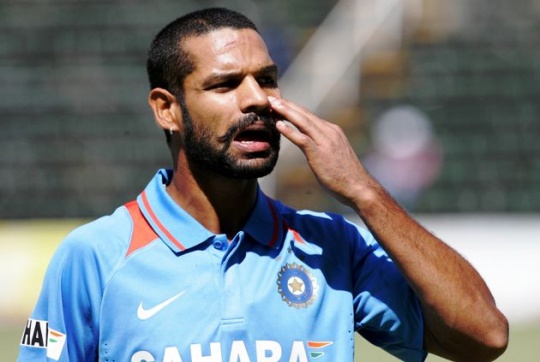
IPL: A necessary evil in cricket

The month of April marks the Indian summer. For three months, India is battered by heat waves and soaring temperatures. For cricket lovers, it brings the festive season of T-20 extravaganza known to one and all as Indian Premier League or more commonly, the IPL.
With the first edition held in 2008, IPL is not a baby anymore. It has seen everything from scintillating cricket to scandals, from cheerleaders to six-hitters, from slap-gate incident to Gayle-force. IPL is too big to be ignored and with every passing year, it is becoming bigger if not better. The month of April also brings a divided opinion on the status of the league and its impact on the game.
There is a group of people who do not consider it as cricket, for them it is great Indian tamashha and they question the motives of IPL in diverting the attention of young players from Test matches to the “boom-boom” form of the game. They talk about fragile batting techniques, deteriorating spin standards, inability to cope with high quality swing bowling and enticing International players to ponder where their loyalties are – with their country or the adoptive team. These are some of the talking points that come up in some way or other.
The other group talks about the contribution of the IPL to the evolution of the game. It has changed the dynamics of the game. For good or bad, it depends on an individual’s perspective. Here we will look at how IPL has affected the game of cricket and its long term consequences.
IPL encourages batsmen to keep their foot down on the pedal as long as they are at the crease and play carefree cricket. It encourages them to take risks, hit big and hit consistently, run like Usain Bolt between the wickets, innovate and improvise shots to throw the fielding team off-guard and score runs at a frantic pace. The skill-set of modern day batsmen is far more attack oriented than that of their predecessors and they are not afraid to take chances.
All this is not limited to IPL (read T-20), it gets registered in the batsman’s head and he takes this into the longer formats as well. These days we see batsmen scoring almost run-a-ball centuries in test matches, teams scoring at 4-4.5 RPO easily in a day’s play and more test matches ending in a result. It is beneficial for the game. There was a time when people used to criticize test match as a boring endless exercise and dearth of results was a big reason. No doubt that a keenly fought test match stirs a cricket fan like no other format, but with the advent of IPL, there are far more such test matches.
There was a time when a team scoring 250-260 in a 50 over game was the favorite to win the game but just a few weeks ago, Shikhar Dhawan scored 248 runs and he didn’t even bat for 50 overs. India chased down 350 twice with frightening ease against the Aussies. Now a score of 400 doesn’t look like something out of the unordinary. All this suggests that the DNA of the cricket has changed and the game has evolved over the years. Evolution is the gift of nature and for the longevity of an individual, organization or country, evolution is necessary. Hence, it is no surprise that cricket has come a long way and the role of IPL in that is a crucial one.

South America has always produced footballers that have gone on to become the world’s best. Let’s count a few, Maradona, Ronaldo, Rivaldo, Neymar, Suarez, Forlan etc. There is one common string that ties them all, Europe. They all made a name for themselves while playing in Europe for different clubs. Even now there may be hundreds of talented men who are still kicking the ball in South America but a majority of them want to come and showcase their talent in Europe. Why is that? The reason is: The stage.
Undoubtedly, Europe provides them the biggest stage to show the world what they are capable of and if you look at ‘World Player of the Year’ award winners for the last few years, they all play in Europe. What Europe is to football, India is to cricket. With a population of more than a billion and so much passion and love for the game, India is the best place to play cricket if one wants to be noticed. David Miller may have tanked many a bowlers in his native South Africa, but he got unmatched recognition after he hit a magnificent century against RCB last year.
It is because there are so many eyeballs on cricketers in India and when they perform, people take notice. The media, fans, writers and even national selectors take notice when a player performs well in the tournament. Same holds true for Ravindra Jadeja and Shane Watson in 2008; Pragyan Ojha in 2009; Mohit Sharma in 2012. Also, younger players get to share the dressing room with experienced players, which is the part of learning process for them. New talent emerges and cricket gets richer by their presence.
IPL is often criticized as one of the money making schemes of the BCCI. Sure, there is lot of money involved and the BCCI does make a lot of money. But one needs to put in perspective that through IPL a lot of former cricketers, who might have struggled for a respectable life after cricket, get involve in so many forms and earn decent amount of money. There are commentators, coaches, mentors, team-directors etc, all of whom are former cricketers.
Also during the 2012 edition, the BCCI distributed money to former players and wives (of those who are not with us) as a onetime gesture which will provide for them and their family. Yes, the IPL is a money making machine, but the good thing is that a certain amount of money is going back into the game. Also, via franchises a number of people like stadium staff, security personnel are benefitted.

Former cricketers presented with cash awards during IPL final
These are some of the good things which are associated with the IPL but its credibility has been shaken by last year’s spot-fixing scandal. A lot of people have lost faith in it and they do not think that it is a fair competition. If the credibility of the event is jeopardized then it will be very difficult for the BCCI to restore it. It is the responsibility of the BCCI to kick out players involved and practices from the game and set an example for others as well. The game should be in the news for all the right reasons and it is the duty of the BCCI to make sure it happens that way.